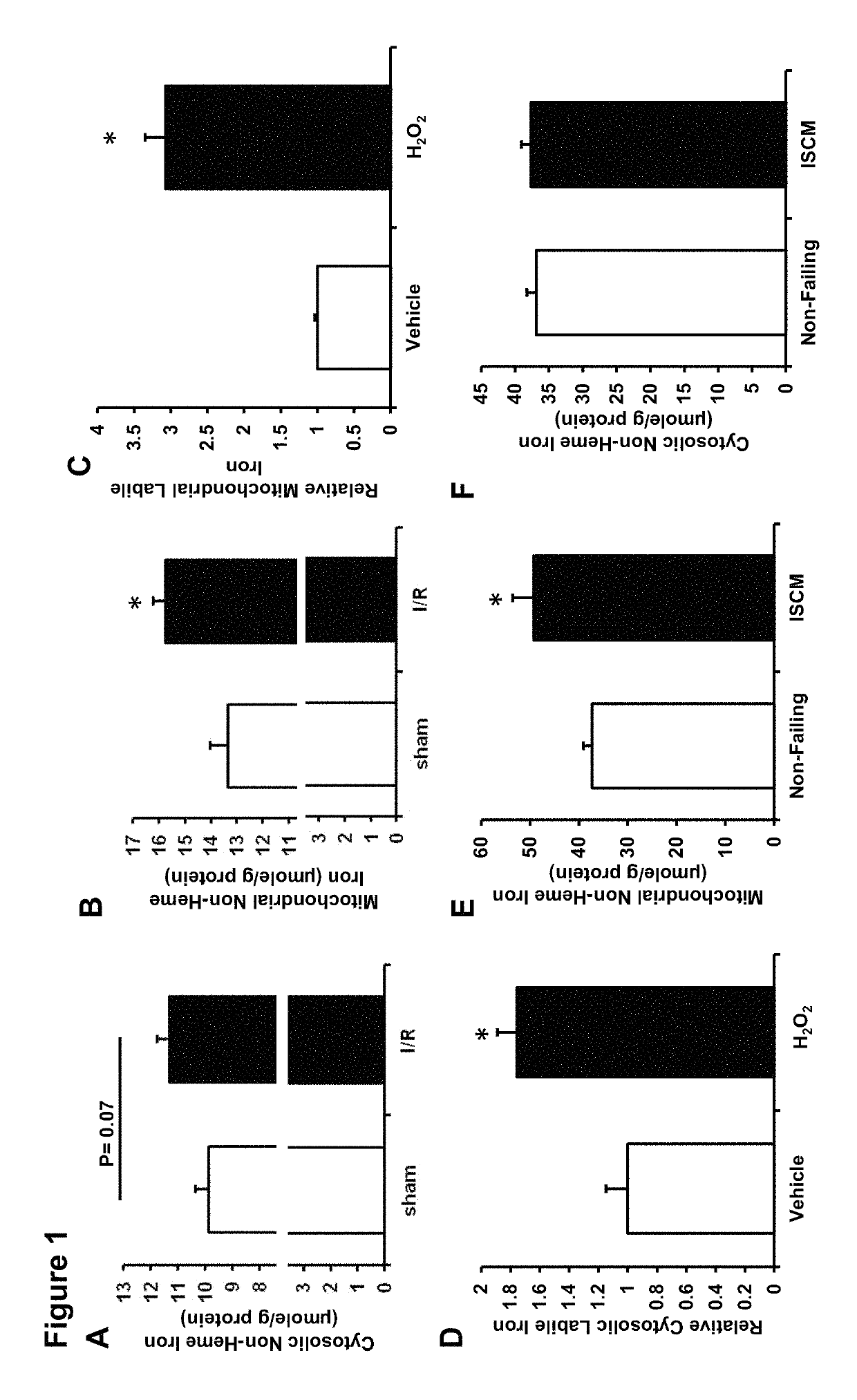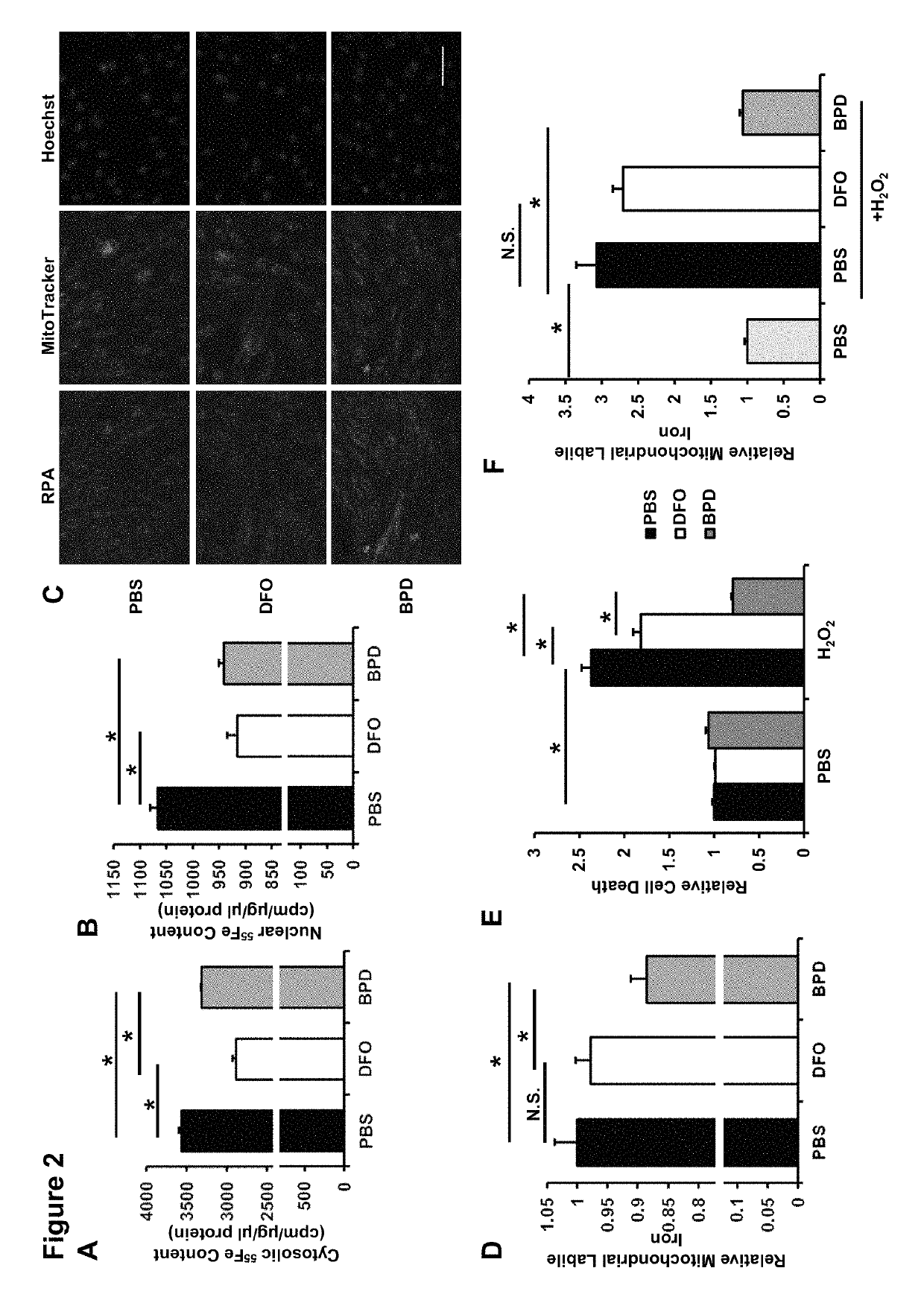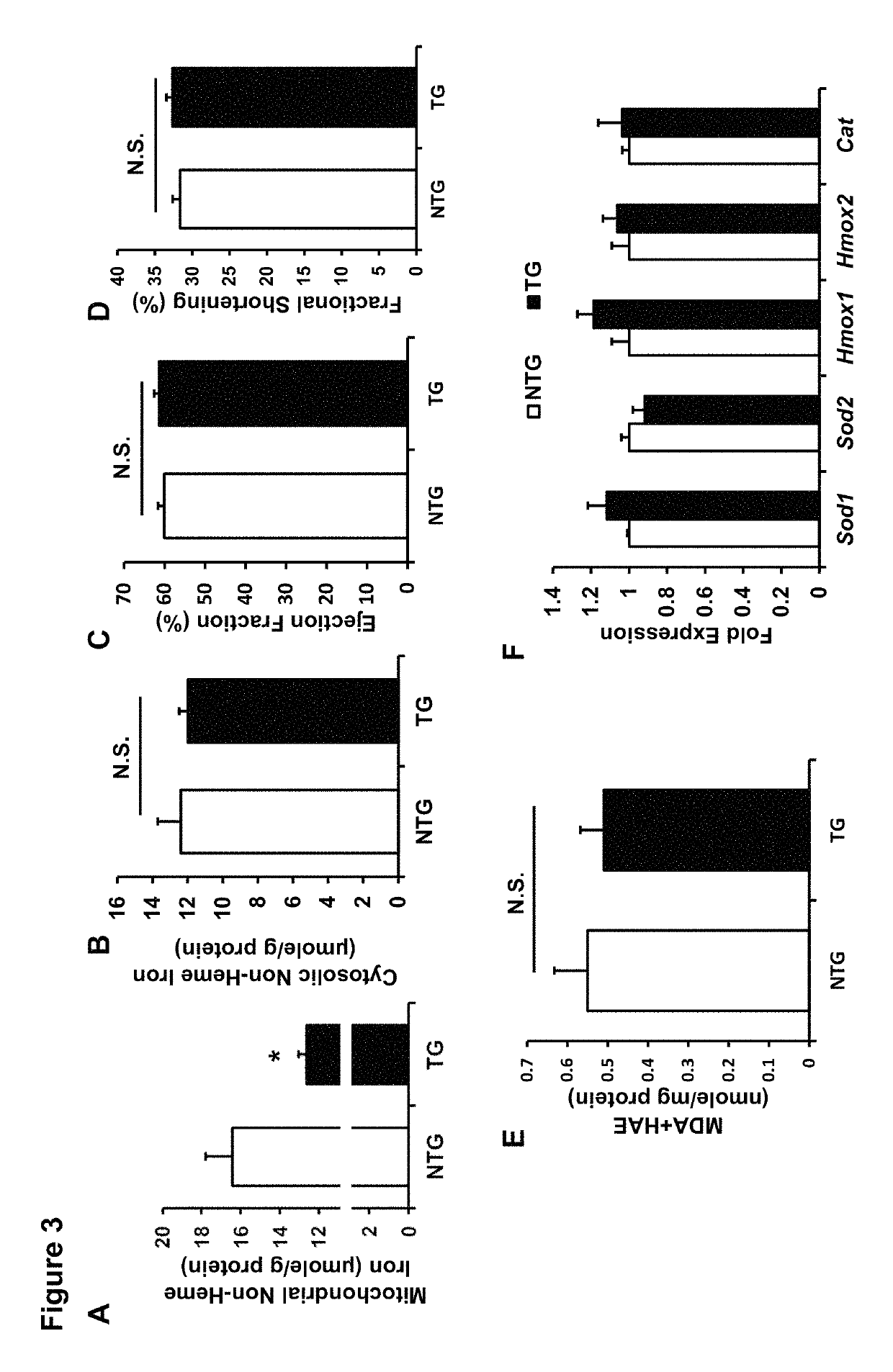Mitochondrial lipid permeable iron chelators for treating and preventing ischemia/reperfusion (I/R) injury in the heart following an ischemic event
a technology of iron chelators and mitochondria, which is applied in the field of mitochondrial lipid permeable iron chelators, can solve the problems of ischemic injury to the heart, increased incidence of this order, and increased heart failure, and achieve the effect of protecting against ischemic injury in the brain
- Summary
- Abstract
- Description
- Claims
- Application Information
AI Technical Summary
Benefits of technology
Problems solved by technology
Method used
Image
Examples
example 1
Mitochondrial, but not Cytosolic Iron, Protects the Heart Against Ischemic-Reperfusion Injury
[0064]Reference is made to Appendix III which includes the Abstract entitled “Reducing Mitochondrial, But Not Cytosolic Iron, Protects The Heart Against Ischemic-reperfusion Injury,” Hsiang-Chun Chang, Rongxue Wu, and Hossein Ardehali, which was presented at the American Heart Association's Basic Cardiovascular Sciences 2014 Scientific Sessions: Pathways to Cardiovascular Therapeutics 2013 Scientific Session and Resuscitation Science Symposium, Jul. 14-17, 2014.
[0065]Introduction:
[0066]Iron is essential for the activity of a large number of cellular proteins, but excess free iron can cause cellular damage through production of reactive oxygen species (ROS). Mitochondria are the major site of cellular iron homeostasis, and we recently showed the mitochondrial iron export is mediated by ATP-binding cassette protein-B8 (ABCB8). The role of mitochondrial iron in ischemia / reperfusion (I / R) injury...
example 2
e in Mitochondrial, but not Cytosolic, Iron Protects Against Cardiac Ischemia-Reperfusion Damage Through a Reduction in ROS
[0071]Reference is made to Appendix II which includes the Abstract entitled “A Decrease in Mitochondrial, but Not Cytosolic, Iron Protects Against Cardiac Ischemia-Reperfusion Damage Through a Reduction in ROS,” Hsiang-Chun Chang, Rongxue Wu, and Hossein Ardehali, which was presented at the American Heart Association 2014 Scientific Session and Resuscitation Science Symposium, Nov. 15-19, 2014.
[0072]Introduction:
[0073]Iron is essential for the activity of several cellular proteins, but excess free iron can cause cellular damage through production of reactive oxygen species (ROS). Iron accumulation in mitochondria, the major site of cellular iron homeostasis, leads to cardiomyopathy. However, it is not known whether a reduction in baseline mitochondrial (as opposed to cytosolic) iron can protect against ischemia-reperfusion (I / R) injury in the heart. We hypothesi...
example 3
ator as a Treatment for Cardiomyopathy, Heart Failure, and Ischemic Heart Disease
[0078]Brief Summary
[0079]Heart failure remains a major health problem in this country and the incidence of this order continues to increase. There are many causes of heart failure. However, the most common cause in this country is ischemic injury to the heart. As a result of myocardial infarction, the heart muscle gets damaged and thus, the heart becomes incapable of pumping sufficient blood to the peripheral tissue. Although there are several treatments are available for both heart failure and treatment of ischemic heart disease, many of these treatments target the peripheral tissue to reduce overall physiological changes that occur because of these disorders. In case of ischemic heart disease, angioplasty and stent placement have also been utilized to treat patients. In our studies, we focused on the heart muscle and attempted to devise strategies to protect the heart muscle (the pump itself) from dam...
PUM
| Property | Measurement | Unit |
|---|---|---|
| concentration | aaaaa | aaaaa |
| concentration | aaaaa | aaaaa |
| logP | aaaaa | aaaaa |
Abstract
Description
Claims
Application Information
 Login to View More
Login to View More - R&D
- Intellectual Property
- Life Sciences
- Materials
- Tech Scout
- Unparalleled Data Quality
- Higher Quality Content
- 60% Fewer Hallucinations
Browse by: Latest US Patents, China's latest patents, Technical Efficacy Thesaurus, Application Domain, Technology Topic, Popular Technical Reports.
© 2025 PatSnap. All rights reserved.Legal|Privacy policy|Modern Slavery Act Transparency Statement|Sitemap|About US| Contact US: help@patsnap.com



